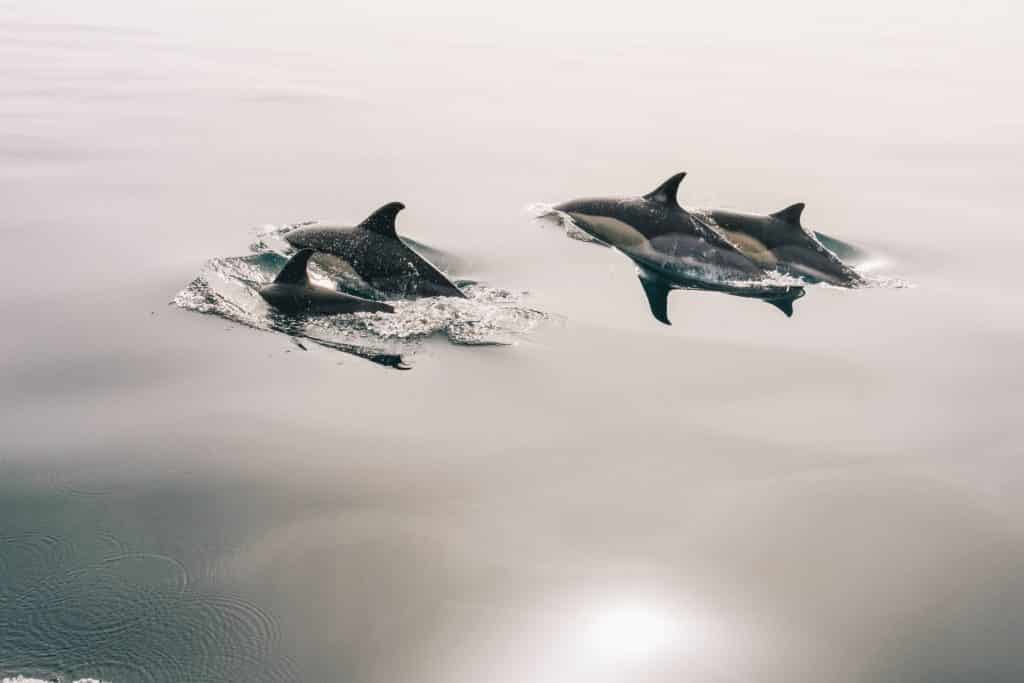by Thomas Gomersall
Tackling the climate crisis is the moral and existential issue of our time, one that’s increasingly relevant to the global financial sector. Private investment in climate solutions is expected to grow following the Paris Agreement, with the International Financial Corporation estimating a US$23 trillion private climate investment opportunity — 81 per cent of which is in Asia-Pacific.
Yet, environmental protection efforts continue to suffer from underfunding. For instance, each year, only US$1.7 trillion of the US$4.2 trillion needed annually to meet the UN Sustainable Development Goals is invested, mostly from public, philanthropic and governmental sources.
But what if there was a way to funnel investment into innovative solutions to the climate crisis, say via the use of a fund? And what if that fund could also help to pay for other conservation efforts like tackling the illegal wildlife trade? Enter the Climate Impact Asia Fund (CIAF).
 (Photo left, Jean-Marc Champagne, WWF-Hong Kong)
(Photo left, Jean-Marc Champagne, WWF-Hong Kong)
The brainchild of Jean-Marc Champagne, Head of Environmental Finance for WWF-Hong Kong, and Alexander Kalis, co-founder of the UK and Singapore-based investment group, Milltrust, with its objectives executed by green investment expert, Jeremy Higgs and his team at the Hong Kong-based Environmental Investment Services Asia Limited, the CIAF aims to direct private investment towards publicly listed companies in Asia that are helping to push for solutions to the climate and ecological crisis. These include companies in sectors like renewable energy, environmental services, water, green finance, low carbon transport, energy management services and plant-based consumer goods.

(Photo left, Alexander Kalis Milltrust International)
The CIAF’s investment in Asian companies is not arbitrary, as the region accounts for over 49 per cent of global carbon dioxide (CO₂) emissions. Although its governments and corporations are still financing fossil fuel projects, the region is also emerging as a leader in climate solutions. According to Bloomberg New Energy Finance, China is by far the world’s-biggest clean energy spender, with deals totalling US$28.8 billion in the first half of 2019 despite pulling back subsidies. Thus, lowering carbon emissions in Asia and encouraging a greater shift towards sustainable and low emission technologies and services amongst Asian companies will be vital to addressing the climate crisis.
What differentiates the CIAF from other green funds is its close partnership with WWF-Hong Kong, which is central to its investment process. Following a strict mandate crafted by WWF, the CIAF chooses companies to invest in based primarily on the positive, impactful climate solutions they deliver and how well they meet certain environmental criteria — like metric tonnes (MT) of CO₂ emissions saved — along with the strength and integrity of their management, value, and, most importantly, the prospects of generating strong returns for investors.
WWF also serves on the CIAF’s investment advisory committee as an environmental consultant. Within this role, it advises the CIAF on whether the practices, business models and technologies used by companies are sufficiently environmentally friendly. It also ensures that the fund manager doesn’t choose stocks from companies with questionable environmental credentials with the power to reject it if necessary. “This veto power is arguably the fund’s most distinct feature and a key reason why WWF-Hong Kong was interested in working in this alliance as we have seen many green funds having fossil fuel-extraction companies as one of their top holdings for example,” says Jean-Marc Champagne.
The CIAF is already showing great promise and is currently invested in 36 Asian companies whose businesses are in line with protecting the environment. One such example is Hong Kong-based soya and plant-based beverage firm Vitasoy. The company is forecast to avoid 1.6 million tonnes of CO₂ emissions in this fiscal year alone due to its heavy focus on soya milk — the production of which emits 3.2 times less carbon than dairy — and its sourcing of sustainable soya beans. Thanks in part to the CIAF’s support, these companies are expected to save 354 million MT of CO₂ emissions, treat 6,382 MT of polluted water and distribute 5,816 MT of clean water to over 42 million households every year.

The partnership between WWF and the CIAF has other, more tangible environmental benefits. The fund donates a significant percentage of the investors fees it collects to WWF-Hong Kong’s regional conservation programmes, which include protecting Chinese white dolphins in the Pearl River Delta, restoring the Asian flyways, making Asian deltas more climate resilient and tackling the illegal wildlife trade. These conservation contributions and benefits boost the investor experience though an innovative package that seeks to do well while also maximising investment returns.

.
.
.
The budding success of this unique collaboration was recognised this month in the inaugural Environmental Finance Impact Awards, which bestowed the project “Impact Initiative of the Year”. But the work doesn’t stop there — the CIAF will continue building on its achievements by raising additional capital and scouting for new companies to invest in. And by successfully channelling private capital to important initiatives, funds like these will help transform Asia-Pacific into a climate solutions hub.
Read More


 (Photo left, Jean-Marc Champagne, WWF-Hong Kong)
(Photo left, Jean-Marc Champagne, WWF-Hong Kong)




